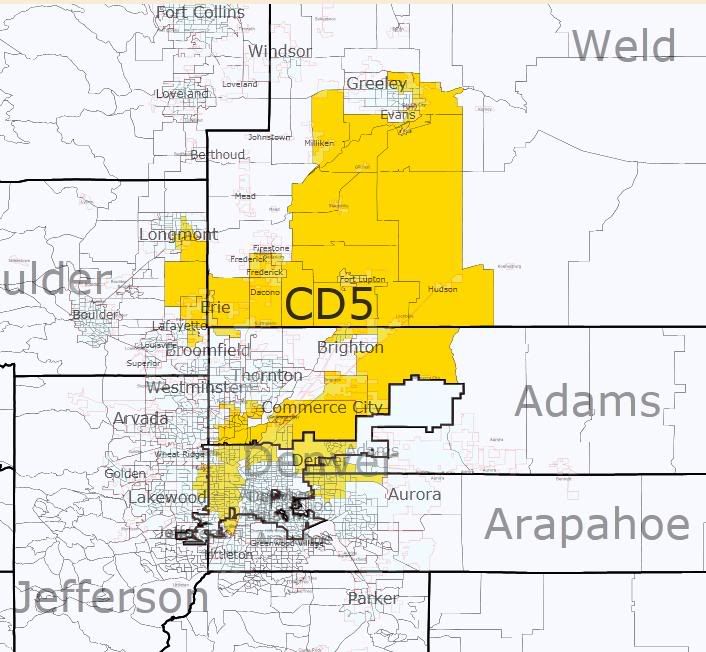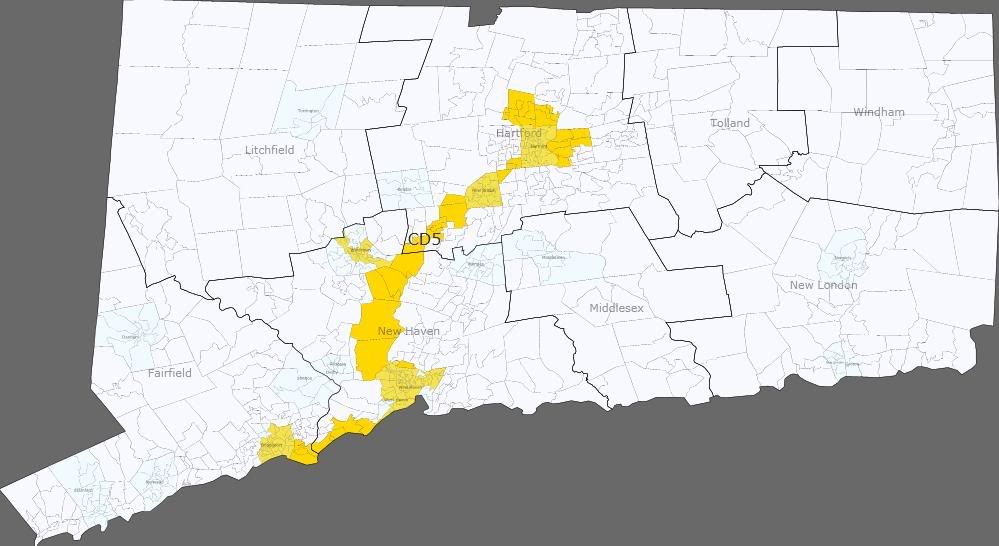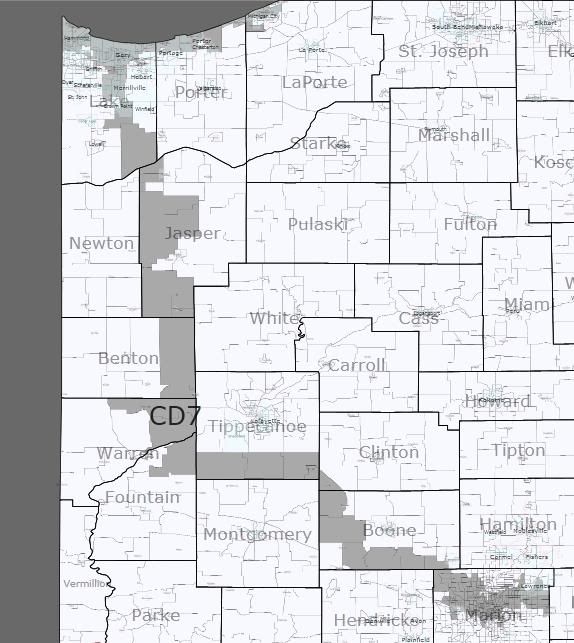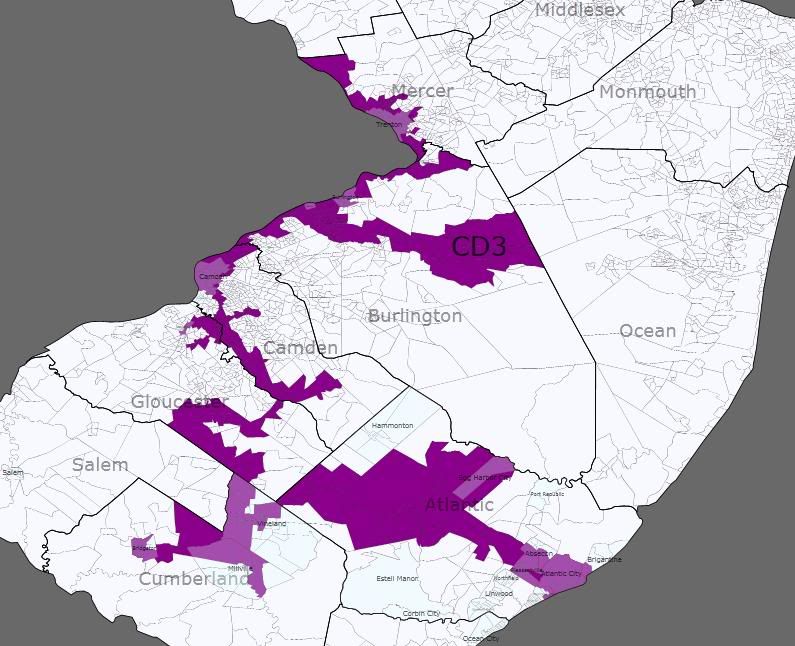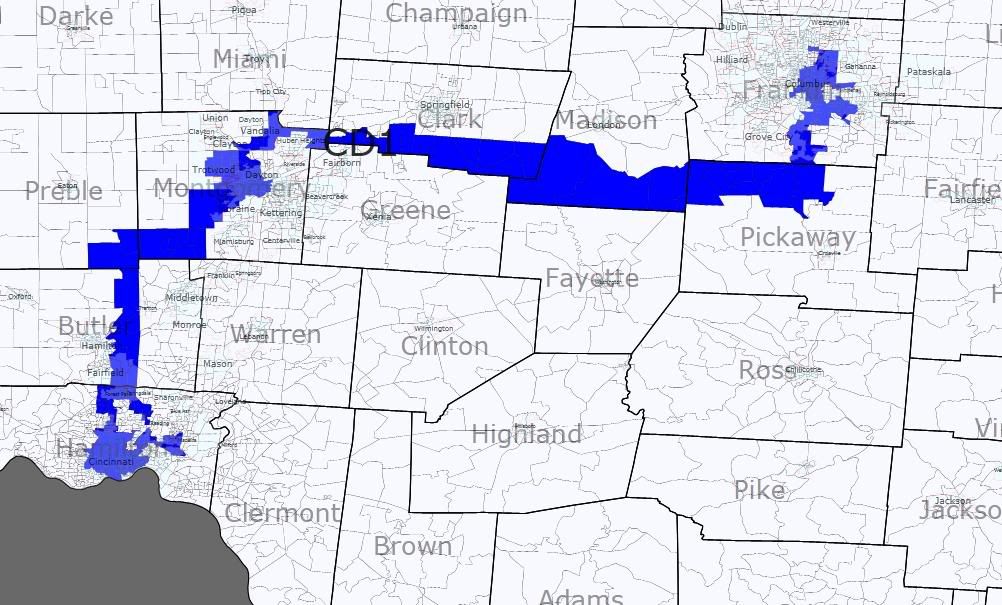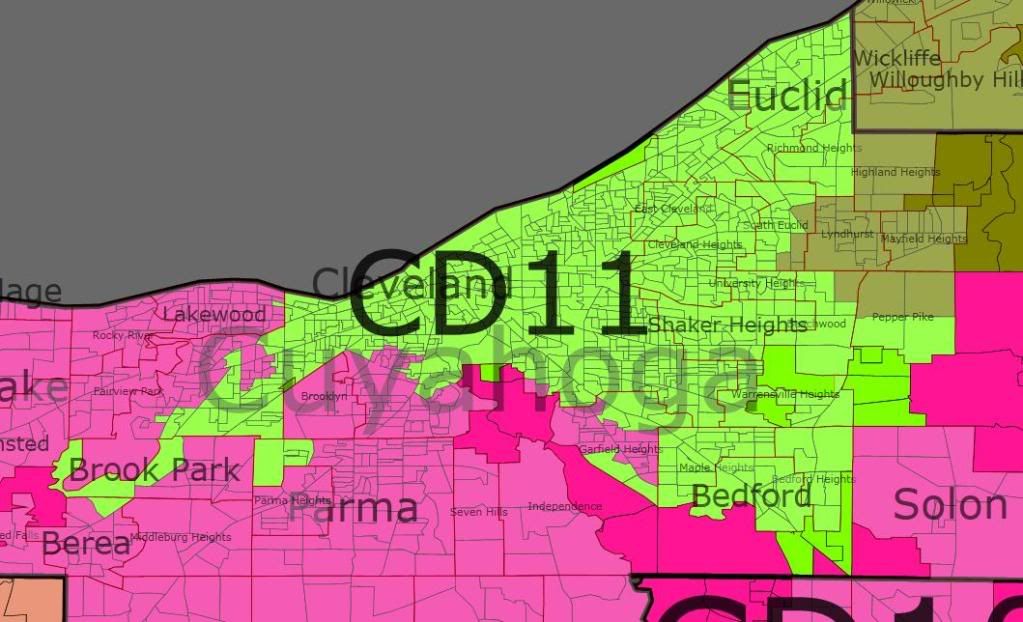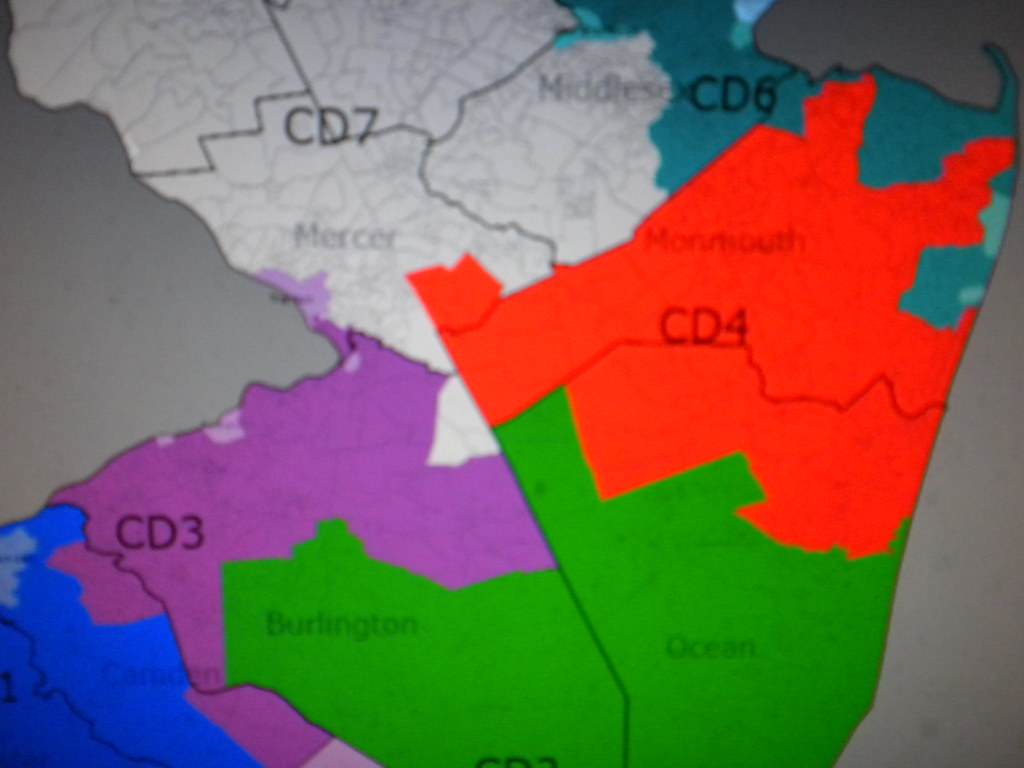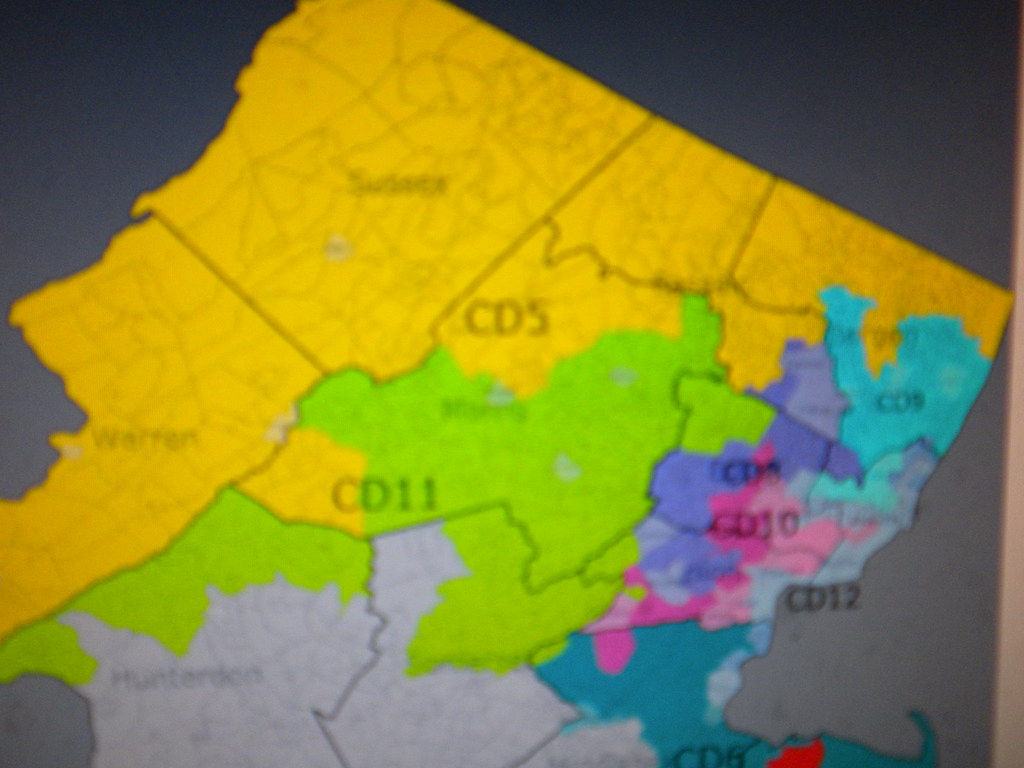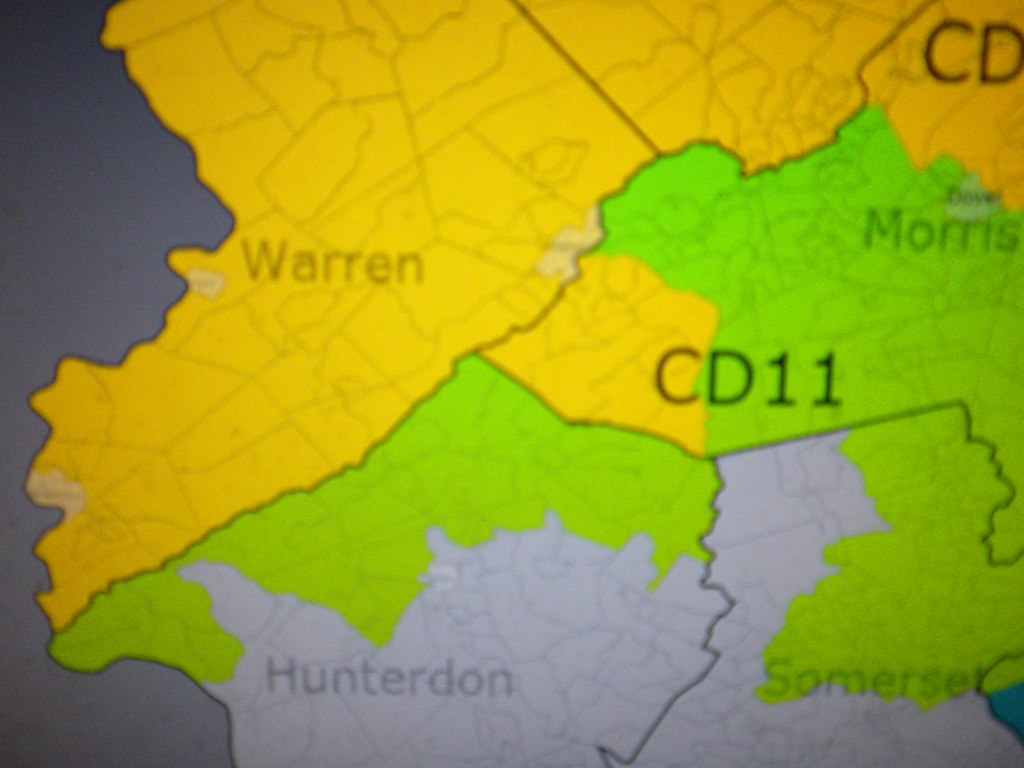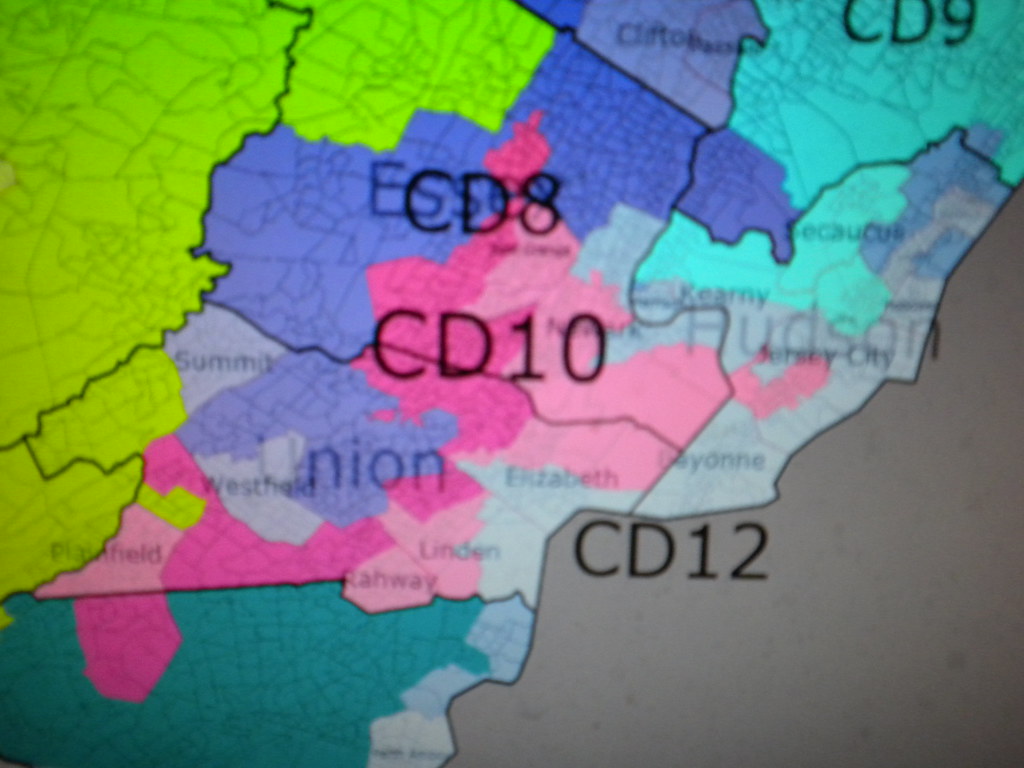Updated with racial data on 2/17/11
The census has just released its data for New Jersey. Not wasting any time, I have made my post-census redistricting plan for New Jersey. This isn’t a partisan gerrymander, I already did one of those. My goal is communities of interest and reasonable compactness, what a good-government redistricting should look like.
New Jersey has 8,791,894 people. That’s 12 districts with 732,657 or 732,658 people each. And it has to be exact or else someone will sue. However some states don’t require exact population equality. For example Arkansas and West Virginia don’t allow county splitting. While New Jersey’s 21 counties are too big for that, you can keep districts close to the ideal population without splitting any of the 566 municipalities. I think NJ should start doing this. In 1960 Newark had more people than a Congressional district, but that is no longer the case.
All districts are within 1% of the ideal population. No one has any grounds to complain about population inequality. I also minimized county splits.
Counties with fewer than 300,000 people were not split at all.
Counties with fewer than 500,000 people were not split more than once.
No county was split more than twice.
I numbered the Congressional districts from south to north. Most districts are already numbered from south to north and I fixed the ones that aren’t.

South Jersey
South Jersey is currently divided into 1 super-packed Democratic district and 3 barely Republican districts. I think this is an immoral gerrymander. NJ has 6 districts that go all the way, or almost all the way, from the Delaware River to the Atlantic Ocean or Hudson River. This probably goes back to when population in NJ was more concentrated in the cities, so the rest of the state got sliced up into segments. Now that more of the population is in the suburbs they should stop doing that. The Delaware Valley and the Shore (Turnpike corridor and Parkway corridor) are 2 separate communities that should get their own districts. Districts 2 and 3 (and 5) follow the Turnpike corridor and Districts 1 and 4 (and 6) follow the Parkway corridor.
1st District (R+1)
Location: Lower shore, Bay shore, and Pine Barrens
Incumbent: Frank Lobiondo
Population: -4551
Largest city: Vineland
Demographics: 68% White, 12% Black, 15% Hispanic, 3% Asian
It’s currently the 2nd district, but I think the big districts at opposite ends of the state should be 1 and 12, so I’m changing it’s number to the 1st. When driving south on the Parkway this district begins where the cities end. It’s urban areas, Atlantic City and Vineland, are separate from the New York and Philly metro areas. It is home to both of New Jersey’s nuclear power plants. (Does any Congressional District have more than 1 nuclear power plant?) It becomes a little bit more Republican but it’s still a swing district. Any district with all of Atlantic, Cumberland, and Cape May counties is going to be a swing district, between D+3 and R+3, no matter what else you add to it.
2nd District (D+10)
Location: Greater Camden
Incumbent: Rob Andrews
Population: -1758
Largest city: Camden
Demographics: 67% White, 16% Black, 11% Hispanic, 3% Asian
Camden County, the suburbs as well as the city, has grown very little since the 2000 census. So the district had to get bigger. It now includes all of Gloucester County. Unlike Camden, Gloucester County has seen some rapid growth. An enormous planned community was built in the sleepy rural township of Woolwich and in the last 10 years its population went from 3032 to 10200.
3rd District (D+9)
Location: Cherry Hill to Hopewell
Incumbent: Jon Runyan
Population: +742
Largest city: Hamilton
Demographics: 64% White, 19% Black, 10% Hispanic, 5% Asian
It’s shaped like Washington DC; a square with a bite formed by a river boundary. This half of Burlington County has 96% of its population. This district is as Democratic as Delaware, which kept reelecting, by a large margin, a Republican Congressman with a moderate reputation. So it is possible but not likely that Chris Smith could run and win here. If Smith wins the 3rd and is able to hold it then I won’t complain because the Democrats aren’t losing something they didn’t already have. I think the most likely outcome is Chris Smith runs in the 4th and Jon Runyan gets the shaft. Republicans will never agree to this so the independent on the commission needs to like this plan better than what the Republicans draw to protect their incumbents.
4th District (R+12)
Location: Mid Jersey Shore
Incumbent: Chris Smith
Population: -55
Largest city: Lakewood
Demographics: 83% White, 3% Black, 9% Hispanic, 3% Asian
The coastal towns all either remained stagnant or lost population while the population further inland skyrocketed. Lakewood gained 32000 people while Jackson and Freehold also had large population gains. This district is incredibly Republican now but that is only a recent trend. It probably voted for Clinton in 1996, and may have voted for McGreevey in 2001. While Chris Smith’s home is in the 3rd, most of his population is in the 4th, so he will probably run in this district.
Central Jersey
Current districts 12, 6 and 7 are skinny districts that span west-east. However like-minded communities in Central Jersey span north-south, and the new districts reflect that. Suburban Middlesex and Somerset Counties have had a lot of growth (for NJ) in the last decade.
5th District (D+10)
Location: Route 1 corridor, from Lawrence to Edison
Incumbent: Rush Holt
Population: +47
Largest city: Edison
Demographics: 51% White, 10% Black, 14% Hispanic, 23% Asian
Districts 5 and 12 trade numbers. This is an affluent, well-educated, diverse, liberal district. It follows the Route 1 and New Jersey Transit corridor. It relies heavily on commuter rail. In fact commuter rail made the growth in this area possible. It is home to both Princeton and Rutgers Universities. It has a good chance of electing an Asian to Congress. As far as I know there are not currently any Asian American Congressmen from any non-Pacific state. This district is more urban than the current 12th because it adds the New Brunswick/Edison/Piscataway area from Frank Pallone’s 6th.
6th District (D+2)
Location: Eastern border, from Neptune to Linden
Incumbent: Frank Pallone
Population: -244
Largest city: Woodbridge
Demographics: 61% White, 11% Black, 18% Hispanic, 8% Asian
This district is more working-class and less affluent than the new 5th. It follows the Garden State Parkway and the North Coast Line. Its strange shape is because it follows the coast. The most Democratic parts of the old 6th were given to Rush Holt and the most Republican parts of the old 12th were given to Frank Pallone. As a result Frank Pallone has a more Republican district. That’s what happens when you un-gerrymander. The territory from Perth Amboy to Linden, which is strongly Democratic, was also given to Pallone. If Pallone ran for reelection in this district in 2010 then he would have won by less than 1%. If a solidly liberal Congressman wins it in a very Republican year then it is still a Democratic district. However if Monmouth County continues to turn more Republican then this district could become winnable for Republicans.
7th District (R+2)
Location: Northwestern suburbs
Incumbent: Rodney Frelinghuysen
Population: +682
Largest city: Parsippany
Demographics: 69% White, 7% Black, 11% Hispanic, 11% Asian
This district is the conservative-leaning suburbs of North Jersey. It is probably one of the most affluent districts in the country. Although it looks different from the current 11th, Rodney Frelinghuysen already represents 47% of its population. This district could turn Democratic in the next 10 years.
North Jersey
The 4 small urban Congressional districts in metro North Jersey have been reduced to 3 because of population loss. I ended the racial gerrymander that caused Newark, Elizabeth and Jersey City to be split along racial lines. The Payne and Sires districts are still minority-majority so there should be no issues with the VRA. Meanwhile Rothman and Garrett get combined into an all-Bergen County district.

Prepared using Dave’s Redistricting App and Bing Maps
8th District (D+30)
Location: Newark, Elizabeth, and surrounding cities
Incumbent: Donald Payne
Population: +813
Largest city: Newark
Demographics: 20% White, 46% Black, 29% Hispanic, 3% Asian
In addition to Newark and Elizabeth, there are smaller mostly-black cities such as East Orange and Irvington, suburbs with large black populations such as Maplewood and Union, and a few white suburbs needed for population equality.
9th District (D+16)
Location: Hudson County and Meadowlands
Incumbent: Albio Sires
Population: +1458
Largest city: Jersey City
Demographics: 36% White, 10% Black, 39% Hispanic, 13% Asian
Instead of trying to split up Hudson County among its different demographics I decided it was better to embrace it as a diverse multi-ethnic district. The district is also economically diverse. It is home to the Gold Coast and to many new-immigrant neighborhoods.
10th District (D+10)
Location: Northern Essex and Lower Passaic
Incumbent: Bill Pascrell
Population: -1543
Largest city: Paterson
Demographics: 47% White, 13% Black, 33% Hispanic, 6% Asian
This district is, for the first time, a minority-majority district. It consists of northern Essex, lower Passaic, and a few towns in Bergen. I chose towns that border Clifton and Paterson because those cities are the center of the district. The Hispanic population in this district keeps increasing, so it has a good chance of electing a Hispanic Congressman. Both Clifton and West Orange had significant population growth in the last decade.
11th District (D+2)
Location: Bergen County
Incumbent: Steve Rothman and Scott Garrett
Population: +3529
Largest city: Hackensack
Demographics: 61% White, 6% Black, 15% Hispanic, 16% Asian
This is where 2 districts get combined into 1. Bergen County is traditionally swingy at the state level, so it’s a good place to combine an incumbent Democrat and Republican. The new 11th consists of 54% of Steve Rothman’s population and 58% of Scott Garrett’s population. That adds up to more than 100% because new districts are bigger than the old ones. This district is fairly affluent and well-educated. It spans from the Ramapo Mountains to the George Washington Bridge.
12th District (R+11)
Location: Skylands
Incumbent: Leonard Lance
Population: +878
Largest city: Mount Olive
Demographics: 83% White, 2% Black, 9% Hispanic, 4% Asian
Rural northwest NJ is a community of interest and up until now it is split 3 ways to help 3 Republican districts in North Jersey. This region should be its own district. By now even this district is more suburban than rural. It is probably one of the wealthiest districts in America. It is solidly Republican unlike neighboring rural areas in Pennsylvania (Poconos) and New York (Catskills). It does not have much area in common with Leonard Lance’s Congressional District, but it does look a lot like Lance’s old State Senate District.
Final Notes
I have been working on New Jersey for a long time and now that the census data is in, this is my final product. If I get positive feedback for it here than I will send it to the actual New Jersey Redistricting Commission.
I am a Democrat and this is what I consider a fair map. I am not claiming it is bipartisan.
Is it better to keep cities together or is it better to divide them in order to maximize black and Hispanic voting power in their respective districts? I don’t know. The best way to find out is to go to Newark, Jersey City, and Elizabeth and ask the black and Hispanic people what they would prefer. However as soon as you split one city you no longer have an excuse not to have exact population equality, and you will be splitting many cities and townships throughout the state.
This should be my last redistricting diary. I don’t plan to do any other states.
Thank you Dave Bradlee for your amazing app! Compare the map I made using Dave’s App to the map I made on my own.





